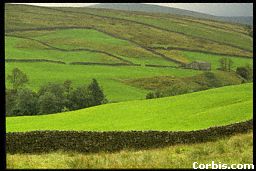 |
| Pip & John Townley We have two Sony Digital 8 camcorders (7000 & 620E) The big optical zooms are very useful, the 7000 has a 20:1 optical zoom and the 620E has a 25:1 optical zoom. This can also extend by a factor of 4 (80:1 and 100:1) by going into digital zoom, but this inevitably affects the quality of the image. They are not as light as miniDV but we both prefer a heavier camera for stability on the odd occasion we need to hand-hold. The 620 has a larger than average fold-out viewing screen which is better for vision problems, and is much clearer than screens on many similar priced cameras. The 620 has DV and analogue in and a memory stick for stills (800,000 pixels). We have a range of tripods Pipís favourite is the Benbow Trekker which is made for outdoor work, and particularly for work on uneven ground and in water. It is useful for getting down very low. It is also very stable in windy conditions but is heavier than many tripods on the market. Johnís favourite for working in the house, hide or garden is the Unilok, but it is too heavy for taking out on location. As we have no transport, we occasionally use a Sony lightweight tripod but it tends to be unstable in the wind. We have two tripods with a fluid head which makes panning and tilting very smooth. The other tripods are fitted with good quality pan and tilt heads. The Unilok and Sony have a spirit level which is very useful for keeping the horizon level, especially for waterscapes. Mics We use the onboard mic for most wildlife filming. However we both swear by our battery powered tie-clip mic for interviews and also to put narration on to the computer for editing (via Goldwave). We really need a good mic however for using at a distance from the camera. A friend was kind enough to lend us a Sony ECM-909A Mid Side 90/120 degree stereo mic for a church dedication service and to record a choir recently which we found provided superb quality audio. We use a Sony x 2 screw-in converter This is ideal for getting really close up shots of wildlife when it isnít possible to get close, and as extra help in macro filming. We have two favourite carrying cases Johnís is a Jessops soft bodied with lots of pockets, very lightweight and can be carried across a shoulder. Pipís is a Jessopís aluminium case which is good protection for gear when working on damp or muddy ground and wipes clean. It is also useful as a rock-steady stand in situations where a tripod wonít go. Drawbacks are itís weight and it is difficult to carry on the shoulder, although a shoulder strap is supplied. |
| We always carry a small reflector to guide light into those dark corners These vary from bits of radiator reflector to oddments of photo reflector. Editing set up We use Premiere 5.1 computer editing software. This has superb facilities for nature footage: it is possible to place animals, birds etc. where you want in the screen and you can zoom in to cut out bits of rubbish or unwanted branches at the edges, or to simply to bring the subject nearer. You can use the Ďsharpení filter to improve out-of-focus footage. The speed adjustment is fantastic for adding drama through slow motion and it reduces camera movement when you have to hand-hold. You can also freeze any frame for as long as you want - converting that split-second shot into usable footage in the form of a still. The colour filters are useful also, suggesting sunset or sunrise with a rosey glow or turning day into night, or use it to brighten flower shots or simply correct colour imbalance. The program also has 99 video tracks allowing you to superimpose one scene over another. There is also blue screen facility but we havenít used it yet. Premiere is also useful for editing audio, again with 99 audio tracks. We also use Goldwave audio editing software to record voice and music etc. for use in Premiere and to manipulate sound. We downloaded a free sound effect from the net of bird wings flapping and change it through Goldwave to suit everything from a dragonfly, through starling to magpie. We do much the same with insect buzzing. Having DV-in on the camcorder allows us to transfer our completed films back from the computer on to digital tape: being digital in recording, in editing, and in finished form keeps both sound and picture of very high quality. We then transfer film to SVHS video tape on our Panasonic SVHS VCR for family viewing and for club use, taking a few VHS copies on our bog-standard VCR also for family and friends who request them. |
| My Equipment (page 2) |
 |
| Wildlife Video Bar t'at |